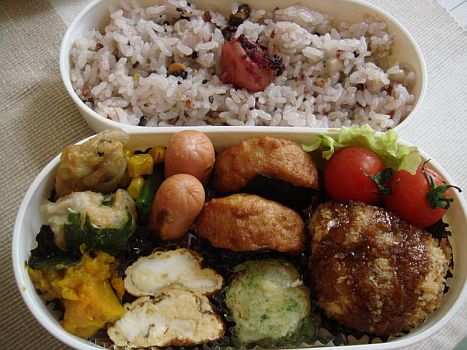Who doesn't enjoy a picnic or barbecue on a beautiful summer day surrounded by friends, family, delicious food, cold beverages and lots of bacteria?
Well, yuck, maybe not that bacteria part.
You may not have invited them to your party, but the bacteria may be there anyway. Every year, more than 76 million cases of foodborne illness occur just in the United States. The number of people suffering from "food poisoning" in the United States and other industrialized countries increases 30% every year.
Foodborne illness usually results in nausea, vomiting, diarrhea or fever caused by bacteria that are lurking on foods and dining surfaces. Symptoms can be fairly mild or quite severe, and they are more likely to affect babies, pregnant women and elderly people.
When food safety is ignored at a picnic or barbecue by leaving perishable food out in warm weather, the bacteria flourish and threaten to make everyone sick.
Keep unwanted microscopic bullies from crashing your outdoor party by following basic food safety practices. Make sure foods are kept cold or hot, and raw meats are separated from cooked or ready-to-serve foods. Everyone needs to wash their hands and use clean serving utensils.
You also need to pay attention to how long your dishes sit on the picnic table. Bacteria grow best between 40 and 140 degrees. Most of the food you serve at your picnic will only be safe on the table for two hours and, if the air temperature is over 90 degrees, food becomes unsafe after only one hour. Once leftovers have been on the table that long, don’t keep them -- throw them away.
Use the same basic steps of food safety and cleanliness with outdoor cooking and eating that you would follow in your kitchen to keep foodborne illnesses from spoiling a lovely summer day:
Keep cold foods cold until they are served. If you are at home, you can use the refrigerator. But for a picnic in the park, bring coolers with plenty of ice or freezer packs. Use one cooler for ready-to-serve foods and beverages and another for any uncooked meat for the grill.
Pasta salads and potato salads are picnic staples. Contrary to common thought, mayonnaise is not the culprit that causes spoilage. The bacteria prefer the eggs, potatoes or other ingredients. Make sure salad is kept cold until it is time to eat. Serve only the amount of salad that will be consumed within one hour, and keep the rest in the cooler. If you need more, make sure to use a clean serving dish and spoon; don’t reuse the ones that have been sitting on the table.
Fresh fruits with thick coverings, such as watermelons and apples, will keep for several days at room temperature. Once they are cut, treat them like other perishable foods. If they are not eaten within one to two hours, discard them.
Casseroles should be cooked to an internal temperature of 165 degrees and held at 140 degrees. Use insulated containers that will maintain that temperature, or keep foods warm in the oven or slow cooker.
Hot fried chicken should be served and eaten within one or two hours after cooking or purchasing. Cold fried chicken needs to be kept below 40 degrees until it is served, just like other cold foods.
Rare beef can be cooked to 140 degrees, however hamburgers should always be cooked to 165 degrees. Ground meat has more surface area than steaks or chops and should always be cooked to a higher temperature. Poultry should be cooked to an internal temperature of 160 degrees. Hot dogs and other pre-cooked meats should be grilled to 165 degrees. Bring a meat thermometer along to test as you cook.
All raw meat and poultry should be thawed and kept cold until you are ready to grill. Meat can be partially cooked beforehand to decrease grilling time. However, it needs to be treated just like raw meat because bacteria will still be present until it is fully cooked. Don’t grill frozen meat or poultry as it is difficult to cook evenly and safely.
Not all foods need special handling for a picnic or barbecue. Cookies, breads, rolls and crackers can safely be kept at any temperature -- just keep them covered for freshness. Condiments such as ketchup, mayonnaise and mustard are acidic, so they are really not a problem for a picnic. Keep jar covers on, or use squeeze bottles.
Pack clean platters and utensils for serving grilled meats. Bring a separate box or plastic bag to hold dishes that have held raw meats until you bring them back home for cleaning. Better yet, use disposable trays and plastic containers to transport your raw meats, and throw them away after the barbecue.
Bring spray cleaners, soap and water (or hand sanitizer), paper towels, cloths, and napkins. Wash tables or use fresh tablecloths. Clean the grill before cooking.
If you need to use insecticides to kill mosquitoes, flies and other unfriendly pests, spray the picnic area before you bring the food, plates and utensils. Spray downwind from yourself, and let the spray settle before you unpack.
Don’t let guests serve themselves with the forks and spoons that they have used for eating. Keep clean serving utensils for each dish.
Have guests wash their hands or use hand sanitizers and wipes to reduce the spread of bacteria from person to person. This is very important if you are serving foods that are easy to grab by hand.
By Shereen Jegtvig,

















































